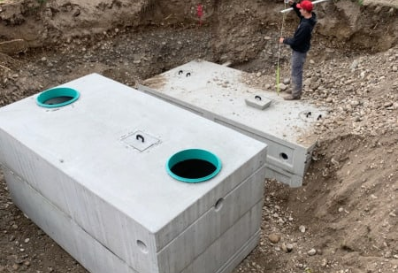If you’re noticing an increase in drain odor or sediment in your sink or bathtub, those are signs that your septic tank needs pumping. Pumping your tank will help clear out the drainage system and prevent issues from escalating. Pumping your septic tank infrequently can help to maintain your septic system and keep it running smoothly.
How often should you pump your septic tank?
If you notice an increase in odor or sediment in your sink or bathtub, it may be time to pump your septic tank. Pumping your tank can help reduce drainage problems and maintain your septic system’s overall function. There are a few different ways to pump your tank, and each option has its own advantages and disadvantages. Before you pump your tank, be sure to read the instructions carefully to ensure a smooth and successful process.
What signs indicate that your septic tank needs pumping?
When it comes to septic tanks, one of the most common problems homeowners experience is an increase in drain odor or sediment in their sink or bathtub. If you are noticing either of these things occurring more frequently than normal, it may be time to pump your tank.
Signs that may indicate your septic tank needs pumping
There are a few different signs that may indicate your septic tank needs pumping. If any of the following are present, it is typically a good idea to get your tank pumped:
- You have an increase in the time it takes your tank to empty compared to normal
- You have an increase in the amount of water your tank pumps out each day
- Your tank is not draining as fast as it used to
- You have a strong smell coming from your home’s drains

Follow these simple steps to pump your own septic tank:
- Shut off the main water valve to your home. This will prevent water from going into your septic tank and filling it up.
- Remove any furniture or objects in front of the septic tank’s intake pipe.
- Dig a hole about two feet wide and two feet deep and place the end of the discharge hose into it. Make sure the outlet end of the discharge hose is pointing down into the hole you have dug.
- Place the intake pipe onto the top of the hole so that the outlet end of the discharge hose is hanging down into it.
- Make sure the discharge end of the discharge hose is tightly connected to the on/off valve on the septic tank so that you will not have to run back and forth between the two every time you need to pump your tank.
- Turn on the on/off valve on the septic tank, and wait until the pump begins to run.
- Keep an eye on the overflowing area in your toilet bowl, as this is how you will know when your tank has been pumped enough. Once you see water stopped overflowing from your toilet bowl, turn off the on/off valve on your septic tank and remove the discharge pipe from the hole.
How to pump your septic tank.
If you are noticing an increase in drain odor or sediment in your sink or bathtub, it may be time to pump your septic tank. Pumping your septic tank regularly can help to reduce the number of times it needs to be pumped and also improve drainage.
To pump your septic tank, there are a few things you’ll need to do. First, make sure you have the right equipment. Second, follow the instructions provided by your septic tank’s manufacturer. Third, be aware of the risks associated with pumping your septic tank. Finally, enjoy the benefits of regular pumping!
